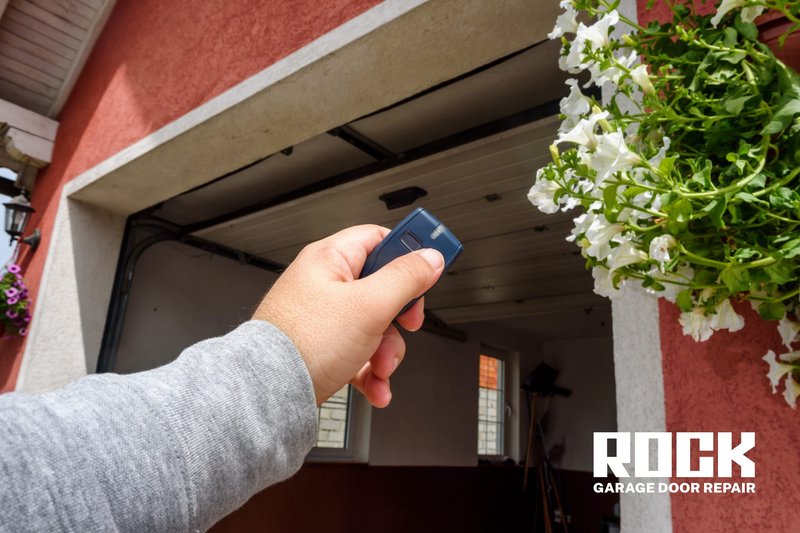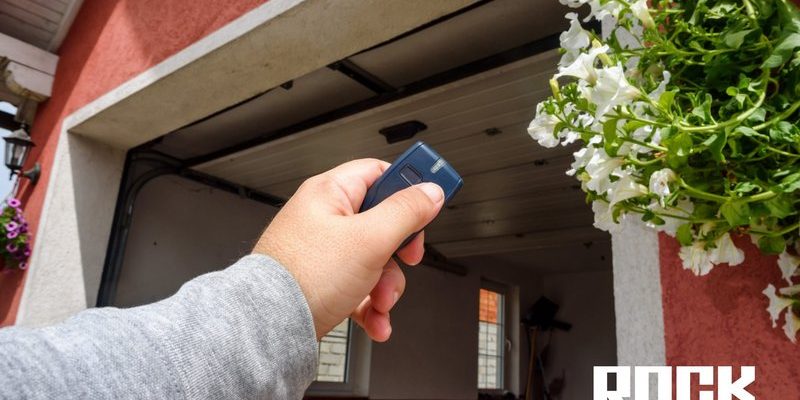
These remotes, made by Linear—one of the big players in the garage door scene—aren’t all that mysterious. They communicate wirelessly with your garage opener using a special code. When something goes wrong, it’s usually not black magic, just a simple hiccup in the setup. Maybe the battery’s fizzled out, maybe it lost its sync, or maybe the remote just needs a quick reset. Frankly, most fixes are easier than untangling headphones.
Check the Obvious: Is the Battery Dead?
Sometimes the simplest answer is the right one. Before you panic, check if the battery inside your Linear garage remote is the real culprit. You’d be surprised how often this solves the whole problem. It’s almost like a light switch that’s suddenly stopped working—first thing you do is check if the bulb’s burned out.
Pop open the back of the remote. Most Linear remotes use a standard coin cell battery—CR2032 or something close. If you don’t have a replacement handy, snag one from a grocery or hardware store (they’re cheap). Don’t just look at the battery and guess; swap it out for a fresh one. Even if the battery looks okay, it could be weak, and garage door remotes can get picky when the battery’s running low.
Keep an eye out for any corrosion or gunk around the battery contacts. If you see anything crusty, give it a gentle clean with a dry cloth. Trust me, a dirty battery contact can make a brand-new battery act as useless as an old one. Once you’ve swapped and cleaned, try the remote again. If your garage door still won’t budge, it’s time to look deeper.
Reset and Re-Sync the Linear Remote
Here’s the thing: garage door systems and remotes speak in coded “handshakes.” If those get out of sync, nothing works. Resetting or reprogramming your Linear garage remote is like reconnecting two old friends who haven’t talked in a while. This step solves a huge chunk of remote issues, especially after a battery change or power outage.
First, get into “learn mode” on your garage door opener. Usually, you’ll find a little “Learn” or “Program” button on the opener unit (the part hanging from your garage ceiling). Press and release it—don’t hold it, just a quick press. You’ll see an LED start blinking.
Next, grab your Linear remote and press the main button within 30 seconds. The opener’s LED should stop blinking or flash rapidly, which means the new code’s accepted. That’s basically your garage saying, “Yup, I know this remote.” Try pressing the remote again to see if the door responds.
If you’ve got more than one remote, you’ll need to repeat this for each one. Honestly, it sounds more complicated than it is. If things still aren’t clicking, double-check that you pressed the “learn” button correctly and used a working battery.
Troubleshoot Common Linear Garage Remote Problems
You might be wondering, “What if I’ve tried everything and it’s still not working?” Well, sometimes you hit a deeper snag. Let me explain what else might be going on below the surface.
- Signal Interference: Electronics are picky. Wireless remotes can get blocked by thick walls, metal shelving, or even your car’s own electronics. Try standing closer to the opener or moving your car out of the way to test the range.
- Stuck Buttons: You know how crumbs can jam the keys on a keyboard? The same goes for remotes. If the button feels mushy or stuck, gently wiggle it or blow out any debris that might be in the crevices.
- Remote Damage: Sometimes the remote gets dropped or wet, and the internal board gets zapped. If you see cracks, water marks, or rattling inside, the remote might need a replacement.
- Garage Opener Settings: If you’ve fiddled with the settings on the opener unit or performed a factory reset, you’ll need to reprogram every remote from scratch. Check your opener’s manual for any special instructions.
If you’re the sort who likes tinkering, you could open up the remote (carefully!) and check for obvious issues like snapped solder points or broken plastic. Just remember—if your remote’s still under warranty, don’t void it by poking around.
Understand How Linear Remotes Work
Linear garage remotes aren’t magic, but they are clever. They use a rolling code system. Whenever you press the button, the remote and opener both “roll” to a new code in a predictable way. This keeps your garage from being opened by someone else’s remote, because the codes change each time.
If you ever notice your remote working only some of the time, the rolling code might have gotten out of sync—say, if you pressed the remote a bunch of times while out of range. That’s why occasionally you need to re-pair or reset things. Honestly, it’s a small price for the extra security.
Here’s another heads-up: While most Linear remotes work with Linear openers, some universal remotes try to support many brands at once. Sometimes they don’t play nice. If you’re using a universal remote that’s “sort of” compatible, expect hiccups—especially during code syncing and pairing. A brand-name remote almost always syncs faster and more reliably.
How to Program a New Linear Garage Remote
Let’s say your old remote finally gave up the ghost or fell victim to the washing machine. It happens. Setting up a new Linear remote might sound intimidating, but it’s usually much quicker than you think.
- Pop in a fresh battery before you start.
- Press the “learn” button on your garage opener motor unit (up on the ceiling).
- The opener’s LED will start blinking. This is your window.
- Within 30 seconds, press the main button on your new Linear remote. Hold it for a second or two.
- When the opener’s LED goes solid (or flashes then stops), the remote is paired.
Test it out. If nothing happens, try the process again. Sometimes you must be a bit patient; the timing window can be tight. Also, brand compatibility matters—make sure your model matches the opener (Linear has several series, like MegaCode or Delta, each with their own quirks).
Differentiate Between Brand and Universal Garage Remotes
You might be tempted to save a buck with a universal remote, but here’s the catch: linear garage remotes are specifically designed to match the coding and frequency of Linear brand garage door openers. Universal remotes try to be “one size fits all,” but it’s like using a generic phone charger—it works, just not always perfectly.
Brand-name Linear remotes tend to be more reliable, easier to program, and less likely to lose their pairing after a power outage or battery swap. Universal remotes have a few more steps: you’ll need to match the code type, frequency, and sometimes even flip little switches inside (called DIP switches). If you just want something that works out of the box, stick with the Linear brand.
That said, universal remotes are handy if you have multiple garage door brands at home. Just expect to spend a little more time on setup, and occasional troubleshooting if your doors are finicky.
When to Replace Instead of Repair Your Remote
How do you know when it’s time to let go? If you’ve checked the battery, cleaned everything, tried syncing, and you still get nothing—especially after several resets or if the remote suffered physical damage—it may be time for a replacement.
Here’s the honest truth: remotes don’t last forever. The internal board can wear out after years of use, and the buttons get less responsive. If your remote is older than your favorite pair of slippers, a new one is probably safer and less frustrating.
When shopping for a replacement, check your garage opener’s model number. Not all Linear remotes are interchangeable; you’ll want to match the remote’s model and frequency with your opener for the best results.
Tip: Keep your backup remote programmed and somewhere safe. If your main remote fails unexpectedly, you won’t be locked out in the rain.
Prevent Future Linear Remote Problems: Maintenance Tips
Nobody loves troubleshooting, so a little maintenance goes a long way. Think of your remote like your car keys—something you rely on every day, and worth treating with care.
- Swap the battery every year or two, even if the remote seems fine. Prevention saves headaches.
- Wipe down the remote with a dry cloth and check for sticky spots or dust around the buttons.
- Store the remote somewhere safe—away from water, direct sunlight, or rough handling.
- If your garage opener has a lock mode or vacation setting, make sure it’s not accidentally engaged. This can block remotes unintentionally.
If you lose a remote, immediately erase all codes from the opener and reprogram your ones you trust. That way, lost remotes won’t be able to open your garage.
What If All Else Fails? Next Steps for Stubborn Remotes
Sometimes you do everything right and still get nowhere. When even the best DIY troubleshooting doesn’t work, there might be a deeper issue with your garage opener’s receiver or logic board. Here’s what you can try before calling in a pro:
- Unplug the garage opener for 30 seconds and plug it back in. This resets the logic board and can clear minor glitches.
- Try to program another remote. If that one works, the problem is probably with your original remote.
- If none of your remotes work, but the wall control does, the opener’s radio receiver might be the issue. Receivers can get fried during storms, power surges, or just fail with age.
At this point, reaching out to an experienced garage door technician is the best move. They’ll have tools to diagnose the opener and recommend repairs or upgrades. Sometimes, replacing the opener’s receiver can save you from buying a whole new opener system.
The bottom line: Most Linear garage remote issues are easy fixes, but know your limit. If you’re stuck, don’t be shy about asking for help. Garage doors are big, heavy, and not worth risking safety.
Honestly, nothing’s more satisfying than rolling up to your home, pressing a button, and watching your garage door swing open—like you’ve got your own secret entrance. With a little patience and these tips, you’ll have your Linear garage remote working again in no time. And if not, at least you’ll know you’ve done everything right before calling in backup.
